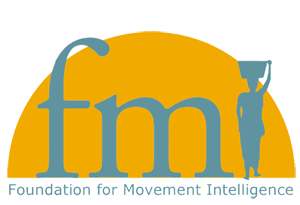Bones for Life® with
 The Transformation of Sitting
The Transformation of Sitting
From Trap to Tool . . .
From Fixity to Mobility
CHAIRS are a cultural artifact that spare humans the more difficult half of fully getting up from, and sitting down on, the ground. Unfortunately, this ubiquitous labor-saving device inhibits our full anatomical potential, and — if not properly utilized — sets us up for deterioration. This program intends to shake us from our habitual maladaptive use of chairs. It offers many short processes designed to enrich us with options for dynamic sitting, as well as to promote more proportional coordination. Further, movements made while seated emphasize transmission of force throughout the entire skeleton — essential for the efficient cultivation of bone strength.
By virtue of its form, seated posture is patterned on four-legged posture; this becomes clear when you consider the 90° angle formed between thighs and trunk. Sitting thus provides an inherent corrective in terms of revisiting the tried-and-true survival patterns of our evolutionary forebears . . . provided, of course, that our sitting is not restrained, nor limits the endless variety of movements of which we are capable — both hallmarks of an expressive, healthy life.
Selective use of a chair’s confinement can also produce desirable results that are not as easily obtained through other means. For example, when seated facing a wall, with one foot pushing the wall, it is easy to elicit a rounding of the lumbar spine and the entire lower back — which fosters a better aligned bridge for the transmission of force in daily life, and models a safe vertebral pattern to partner a stepping foot.
The context of the chair — which lends itself to moderation, slowing down, and support — can enhance the process of safely upgrading weight-bearing posture, upon which all bone strengthening is predicated. Chairs also provide “greenhouse” conditions for learning to best cope with gravity while systematically cultivating the ingredients necessary for getting into and out of a seated position.
A substantial portion of the Chairs program is a reinterpretation of the basic Bones for Life® program. The remaining portion is designed specifically for the unique possibilities offered by the chair.
The Chairs program can be useful to teachers who work with people that have difficulty going down to and getting up from the floor. The processes are performed either on chairs, or while standing by a wall; this enables each person to learn on his own terms, at his own pace. The Chairs program similarly serves people who work for long hours in a seated posture — all too common in our current culture of computers. The wide variety of ideas that the Chairs program presents are readily applied to everyday life, and, given their quick results, offer visceral ‘Aha!’s that provide both immediate satisfaction and lasting value.
